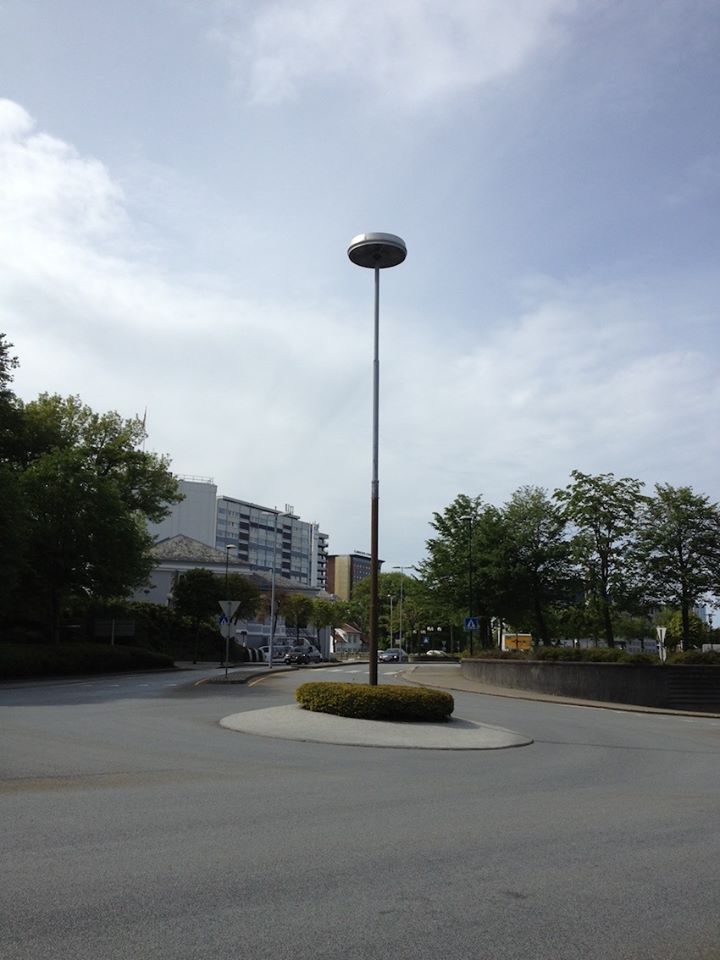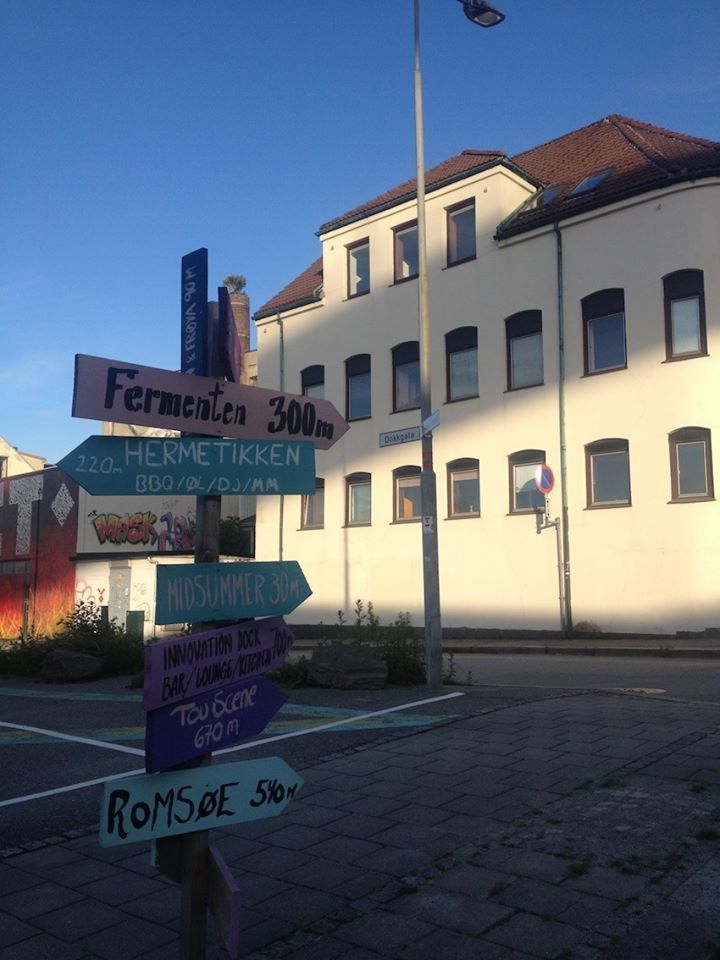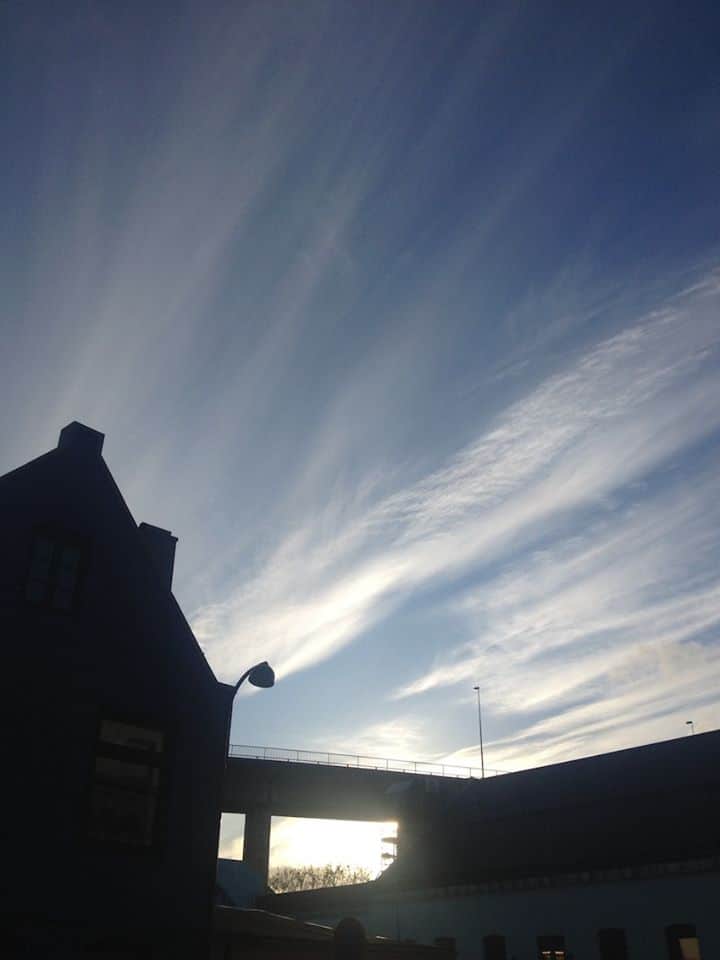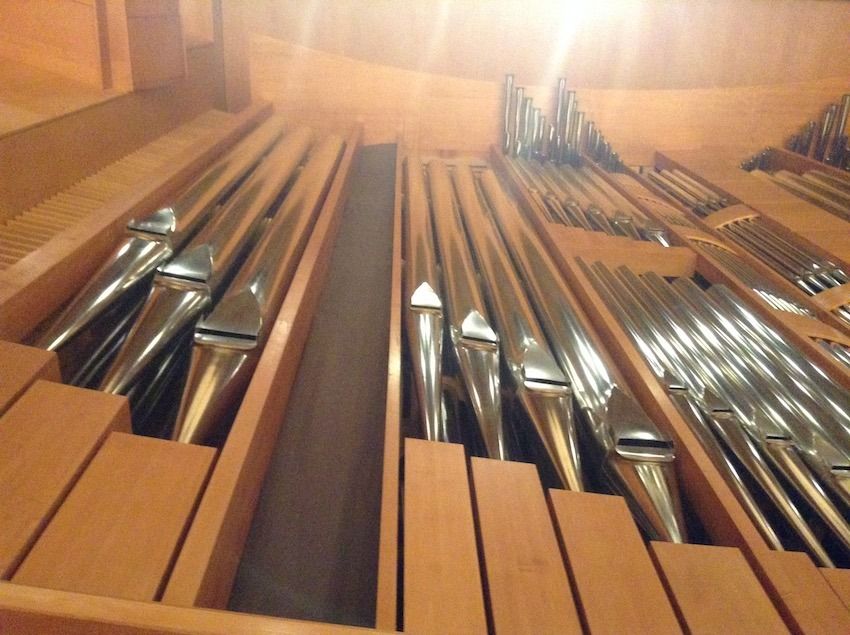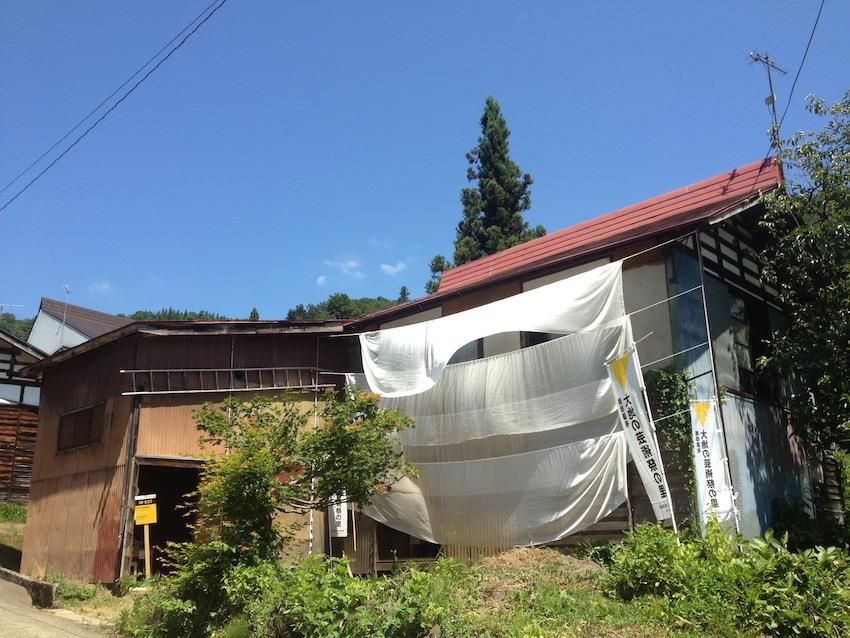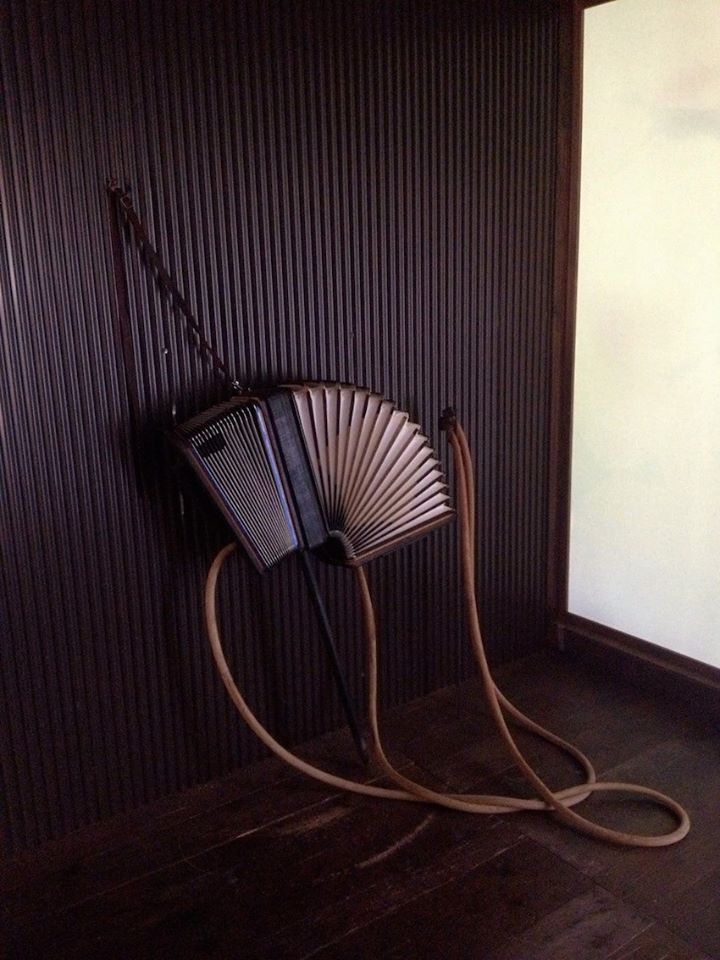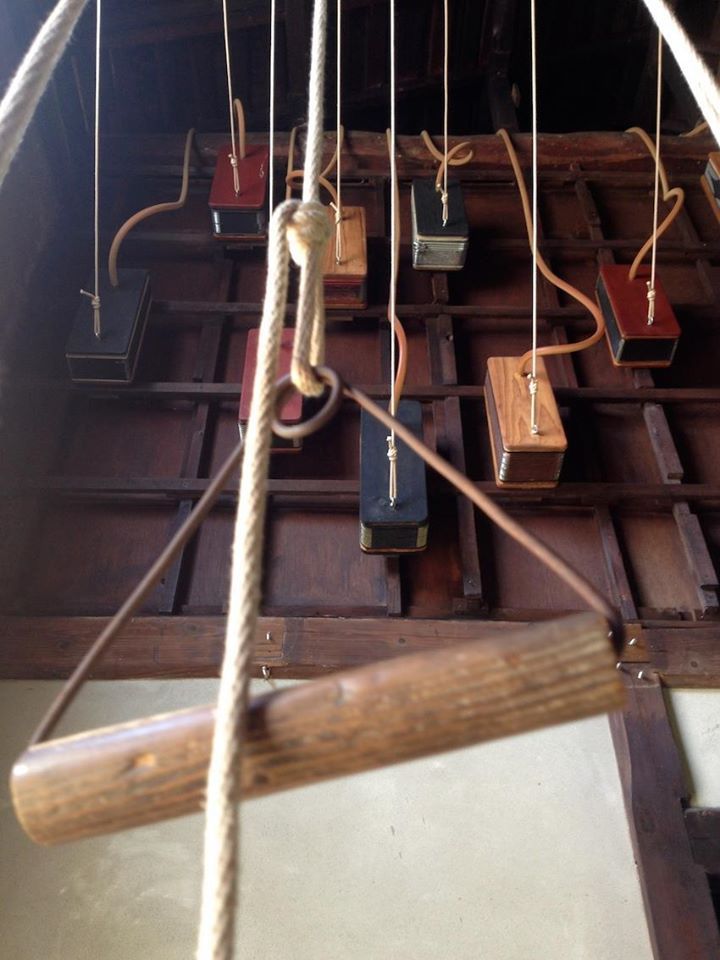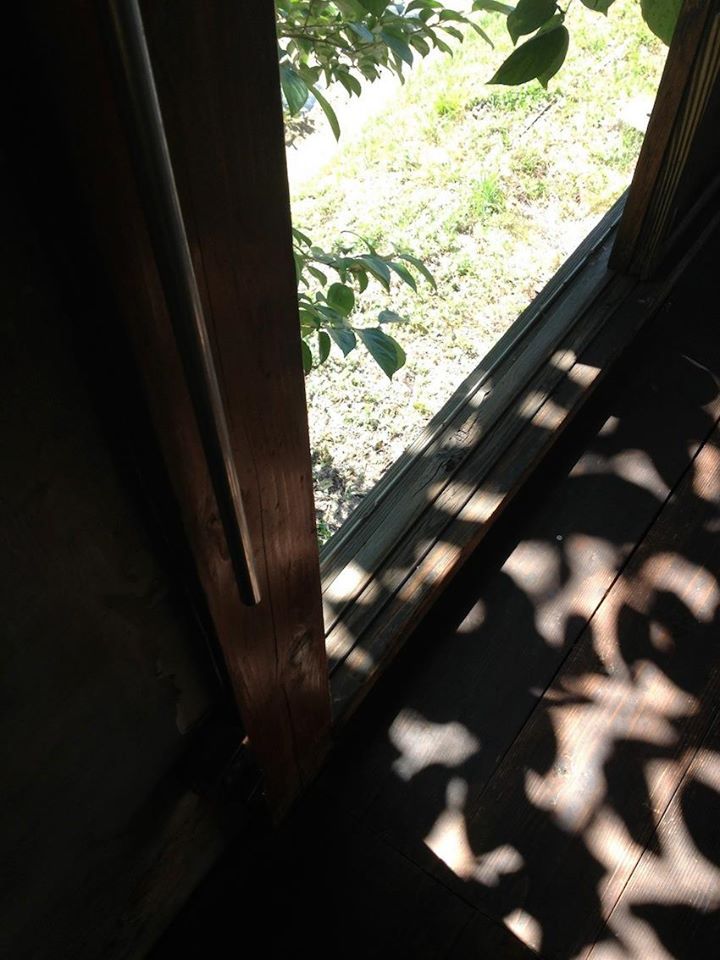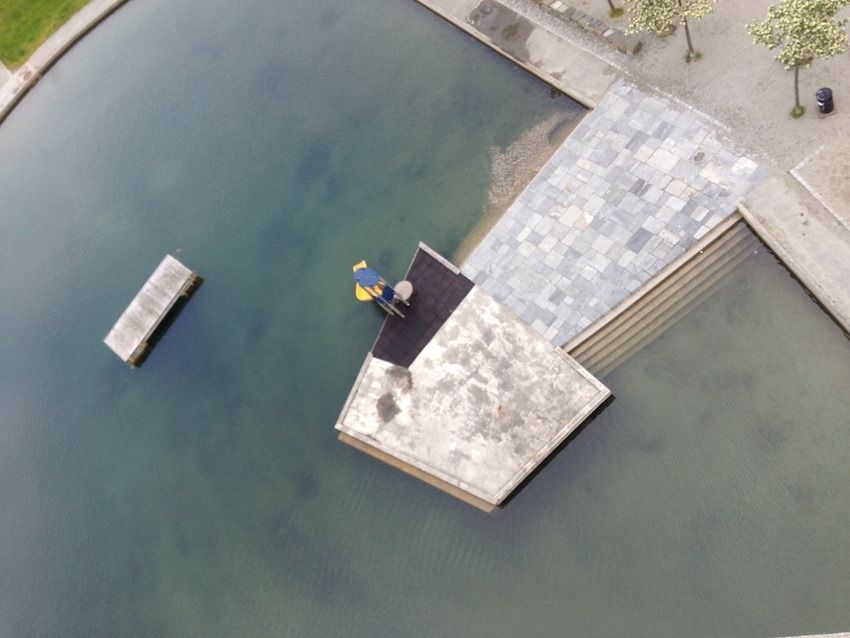Is there such a thing as a cold or warm sound?
I met Nils Henrik Asheim at the Stavanger Concert Hall. He took me on a tour of the organ. Nils was called to the organ when he was a teenager, playing at a church, and given the key to it. So he got “hooked”. He was utterly patient with my ignorance. "The pipes are organized in symmetrical sections, but in the façade they are also coming down like a waterfall," said Nils. 4,554 pipes altogether. The pipes are made of tin and lead, with copper for the support of some, and the wood in the pipes and mechanical parts is a mix of spruce, cedar, birch, and oak. The very low frequencies make me think of the depths of the ocean. The very high ones, like the flute, are like blooming flowers all over the streets of the city. “It takes hours before a concert for tuning specific parts, but two days once in a while to tune the whole thing,” said Nils.
The building: The winning design of the Opera House building from six years ago might not have met the expectations of the public for grand spectacle such as the Sydney Opera House, Nils recalled, but it turned out to be great for sound: 2.5 seconds of reverberation, and with all the rooms isolated, there could be a pop concert in one hall and a concerto in the other without interference, says Nils. The concert hall also presents a mezzanine floor where Nils once made an installation with recorded bird calls.
I asked him how challenging it is to pass on the art of the organ these days, with perhaps not too many organists around. He said there were organists, but if it was always only about the good old days three hundred years ago, playing the same composer the same way, it would be a little disappointing in terms of what we could do today.
All the while we were conversing right next to the keyboard, it felt as if the organ and the hall were eavesdropping, that our thoughts would become their grain, as a secret. This intimate experience reminded me of artist Ann Hamilton. It was a year before, on July 31, 2018, that I experienced Hamilton’s “Air for Everyone” at the Echigo-Tsumari Art Field in the town of Echigo-Tanaka. It was an installation of multiple accordions, some whole but many set apart, hanging on walls and suspended from the ceiling in an old wooden house. Wind coming through the open windows and sliding doors made the house breathe. Of the many conditions of life that the artist gave expression, I was most impressed by the way air was simultaneously a bagful (at rest), drawn through bellows (as music), conveyed and connected by open windows (as wind), trailed from wall to wall (as imaginary & broken music), sculpted into a single long chime (as instrument)....all of which came together to awaken a dwelling. Modes of embodiment kept gently shifting. In the middle of the house, one could pull a string hanging from the ceiling to make a bellow swell; at the gesture of release the bellow would let out an elongated sigh. I imagined how this might come close to being inside the trunk of an ancient tree: from the outside it inspires awe, from the inside it imparts safety, warmth, and an understated marvel. When I was leaving, a silver-haired man came up with a photograph with him and Hamilton in it. The docent on-duty translated for us. I learnt from him that he was attending the house for Hamilton in the beginning, when the work was first made in 2012. He was very proud showing me the photograph




